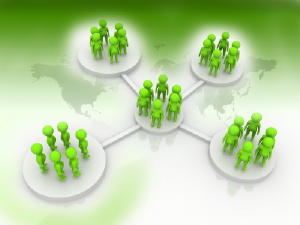-
- 09
Nov - (0)
Social Networking
I have a dim memory that in ancient cyber-times, a number of chat rooms for Alcoholics Anonymous on-line meetings were started on America Online. It was the start of something big.
 I recently read an article in Healthcare Technology about social networking in healthcare, which prompted thoughts about how our field benefits from the phenomenon.
I recently read an article in Healthcare Technology about social networking in healthcare, which prompted thoughts about how our field benefits from the phenomenon.Nowdays we have Facebook, Twitter, and who knows how many general social networks; Linkedin and other services like it cover professional networking, and specialized social networks for other purposes abound. Social media in treatment is intermixed in all this. You can Google “online self help groups” to see the extent of social network availability for people who want to mix electronic communications into their treatment plan.
Friends sharing mental health or addictions problems have ongoing peer conversations; phones light up and Facebook messages help some people get through the day. In New York, The Office of Mental Health and Office of Alcoholism and Substance Abuse Services both have presence on Facebook to keep folks abreast of news and events (search Facebook “Groups” for more information). Professionals like this because it alerts them of free trainings, many available via the Web. Evidently there is value enough in these services to keep people involved…the law of supply and demand being what it is.
How does this enter into the Electronic Health Record (EHR)? You might see references to specific social networking pop up in progress notes, and in some cases as a part of the treatment plan. Because many social networking sites are so wide-open, on-line conversation about mental health and addiction issues potentially blow the cover of folks who would rather remain anonymous. At least one area the EHR shows promise that secure therapeutic social networking of a different sort is on the way.
In order to qualify for Medicare and Medicaid funding that helps pay for technology by demonstrating its effective use, EHRs are compelled to include Patient Portals, which is not far removed from social networking that’s secure. By taking the responsibility vendors can offer technology that enables a patient community password protected technology to help people with like problems network, and that can be a significant part of healing.
Patient portals generally offer a patient access to medication lists with prescription information like expiration dates, or to their scheduled appointments. They often include a communication method to get secure messages to a provider, and other nifty features. A number of hospitals have this technology available for both patients and providers, complete with confidentiality-inspiring security. Everything’s password protected. Very few patient portals are functional in our sector, but at least one manufacturer, Netsmart Technologies, has the technology in place for mental health and addictions.
Once again, the future has arrived.
With all these outlets, the question comes to mind, how many consumers are benefiting from social networking, and what’s the real value in treatment? Another question to address another day.
- 09

Leave a Reply